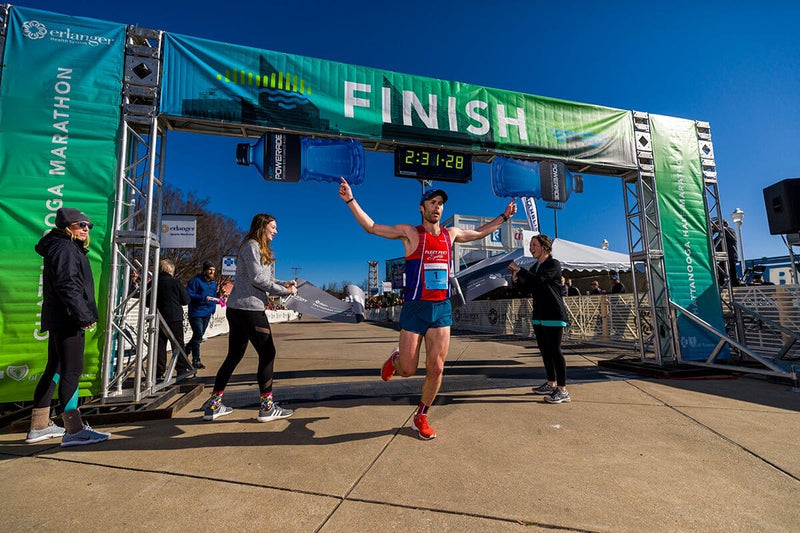
Living with Postural Orthostatic Tachycardia Syndrome (POTS) can feel like you’re on a never-ending rollercoaster ride you didn’t sign up for. One minute you’re fine, the next you’re battling dizziness and fatigue. But guess what? Compression socks can be a game-changer in managing those pesky symptoms.
In this article, we’ll explore the best compression socks for POTS, making it easier for you to find the perfect pair. Whether you’re looking for comfort, style, or maximum support, we’ve got you covered. Ready to give your legs the hug they deserve? Let’s find the best options for you.
Key Takeaways
-
Postural Orthostatic Tachycardia Syndrome (POTS) involves symptoms like rapid heart rate, dizziness, and fatigue, making daily life challenging.
-
Compression socks improve blood circulation and reduce blood pooling, significantly alleviating POTS symptoms such as dizziness and fatigue.
-
The ideal pressure for managing POTS symptoms is 20-30 mmHg, balancing comfort and effectiveness.
-
Options for compression socks include crew, knee-high, thigh-high, and waist-high socks. Thigh-high and waist-high are generally more effective for POTS due to better coverage.
-
Opt for breathable materials like nylon, spandex, or merino wool and ensure a snug but comfortable fit to enhance the socks' effectiveness.
-
Always seek medical advice to choose the right compression socks tailored to your specific needs and symptoms.
-
Properly wearing and caring for compression socks can significantly alleviate POTS symptoms when used correctly and in appropriate conditions.
Understanding POTS
Feeling like you're stuck on a dizzying rollercoaster without the thrill? That's what living with POTS can be like. Let's unpack what this condition entails.
What is POTS?
POTS, or Postural Orthostatic Tachycardia Syndrome, is a condition where your heart gets a bit too excited when you stand up. It's like your heart wants to race without you even moving. This sudden jolt often brings along friends like lightheadedness, dizziness, and sometimes, fainting. It's diagnosed when other culprits like orthostatic hypotension, dehydration, and blood loss are ruled out.
Common Symptoms of POTS
Those living with POTS might experience a plethora of symptoms that can feel like an unwanted party in your body:
-
Rapid heart rate the moment you stand
-
That dizzy spell where you see stars
-
Fainting episodes that take you by surprise
-
Brain fog making you feel like you're in a haze
-
Never-ending fatigue that makes you want to nap forever
-
Headaches that'll make you think twice before moving
-
Nausea or the sudden urge to avoid food
-
Abdominal pain adding to the discomfort
-
Hands or legs trembling like you've had too much coffee
-
Anxiety and depression tagging along like unwelcome guests
These symptoms can make daily life challenging, but understanding them is the first step in managing POTS.
The Role Of Compression Socks In POTS Management
Managing POTS can feel like a constant battle, but compression socks offer a helpful ally. They alleviate many symptoms by improving circulation and reducing blood pooling. Let's look into how these wonder-socks work.
How Compression Socks Work
Compression socks promote better blood flow with graduated pressure. This pressure, measured in mmHg, kicks off at the ankles and eases as it moves up the leg, pushing blood upward to your heart. Imagine your blood taking a fast lane with each step you take. The socks aid in maintaining consistent circulation, making standing a lot less dramatic.
-
Enhanced Blood Flow: By reducing blood pooling, compression socks keep your circulation in check. Think of them as tiny leg-hugging superheroes.
-
Reduced Symptoms: These socks decrease dizziness and fatigue, making it easier for you to stay upright without feeling lightheaded. Less wobbling, more walking.
-
Increased Energy: Improved circulation means your body doesn’t have to work as hard. Hello, extra energy!
Embracing compression socks can make a significant difference in managing POTS. They're more than just a snug fit; they're a step towards easier days.
How To Pick The Best Compression Socks For POTS
Choosing the best compression socks for POTS can feel overwhelming. With countless options available, finding the perfect pair can be a challenge. Let's simplify the process by exploring key factors to consider.
Recommended Pressure
You should look for socks that provide 20-30 mmHg of pressure. It's the sweet spot that can help manage those pesky symptoms like dizziness and fatigue. Who knew numbers could be so comforting?
Types Of Compression Socks
You're spoiled for choice here: crew, knee-high, thigh-high, and waist-high. Waist-high options often get the top vote for POTS. They go the extra mile in promoting circulation and reducing blood pooling. Plus, they can make you feel like a super-powered fashionista.
Material And Fit
Always go for breathable materials like a combination of nylon, spandex, and merino wool. Your feet should feel like they're on a cloud, not in a sauna. Also, a snug fit is key. Too tight? No good. Too loose? Also no good. Seek comfort, and it'll seek you back.
Consult A Physician
Yes, it's tempting to be your own doctor thanks to the internet. But consulting a physician can give you tailored advice, ensuring you pick the ideal socks for your needs. Medical wisdom never goes out of style.
How To Use Compression Socks Effectively
Compression socks can be your best friend when dealing with POTS symptoms like dizziness and fatigue. Knowing how to use them correctly maximizes their benefits. Let's dive into some tips that'll help you make the most out of your compression socks.
Best Practices for Daily Use
-
Put Them On in the Morning: This is when your legs are least swollen. Sit down and slowly roll the socks up your legs. Smooth out any wrinkles to avoid discomfort later.
-
Wear Them Consistently: Consistency is key. Make it a part of your daily routine to wear these socks. Your legs will thank you.
-
Wash Regularly: Keep them clean. A clean pair not only feels better but lasts longer too. Hand wash with mild detergent, and air dry if possible.
When Not To Use Compression Socks
Some days, it might be better to skip the compression socks. Here are times when you might wanna go sock-free:
-
Skin Conditions: If you have skin issues like rashes, open sores, eczema, or cellulitis, give your legs a break as these snug accessories might irritate your skin.
-
Circulation Problems: Conditions like severe PAD or congestive heart failure may not mix well with compression socks. Check with your doctor.
-
Excessive Swelling: If your legs are swelling excessively, you might need a different solution. Compression socks might not do the trick.
By following these tips, you'll find that adding compression socks to your daily routine can significantly ease POTS symptoms and keep you comfortable.
To Wrap Up
Selecting the right compression socks can significantly improve your quality of life with POTS. By understanding your specific needs and carefully considering factors like compression level, fit, and material, you can find the perfect pair to alleviate your symptoms. Remember to prioritize comfort and durability while also being mindful of when compression socks might not be ideal. Always consult your healthcare provider for personalized advice. With the right approach, compression socks can be a valuable tool in managing POTS.
Find relief from POTS symptoms with Sockwell's firm graduated compression socks. With a compression level of 20-30 mmHg and crafted from premium materials like nylon, spandex, and merino wool, our socks offer comfort and support while helping to improve blood flow. Prioritize your health and well-being today. Explore our collections now!



